Warships. On the road to excellence
Today we will talk about the continuation of a series of Italian light cruisers of the Kondotieri type, D series, which consisted of two ships. The first was “Eugenio di Savoy” (in the text - “Savoy”) and “Emanuelo Filiberto Duca D'Aosta” (in the text - “Aosta”).
Forgive me such a liberty with names, but the names are not very short, and I will have to mention often.
So, "Condottieri" of the fourth series, "D". We will not begin to analyze their filling thoroughly, it’s easier to say how they differed from the ships of the previous series - “C”, “Raimondo Montecuccoli”. In fact, the D series was notable for some improvements that can be considered as such.
The shapes of add-ons, chimneys were changed, the installation of universal guns was moved to the nose. Increased the thickness of the armored belt and armored deck, but slightly.
However, the changes affected the displacement. So, to maintain the set speed, it was necessary to increase the power of the power plants. This has been done quite efficiently.
Moreover, it was successful propulsion systems that made the D-series cruisers with the Soviet fleet. The first power plant of the cruiser “Eugenio Savoy” was not installed on the ship, but sent to the USSR and became the power plant of the new cruiser of project 26 “Kirov”. And for the "Savoy" made a duplicate. And the second ship of the series, "Aosta", became a part of the Red Banner Black Sea Fleet after the war.
The standard displacement of Aosta was 8 450 tons, Savoy - 8748 tons, displacement in full load 10 840 and 10 540 tons, respectively. The cruisers had the greatest length of 186 m, 180,4 m along the constructive waterline and 171,75 m between perpendiculars, 17,53 m wide, and draft with a standard displacement of 4,98 m.
Reservations have changed a bit. The citadel was formed from a 70 mm main armor belt, which was the same thickness along the entire length, and a 20 mm upper belt. The thickness of the mine bulkhead was increased to 35 mm in the middle and 40 mm in the cellar area.
A citadel was closed by bulkheads 50 mm thick. The main deck was 35 mm thick, the upper deck was 15 mm. They covered 30-mm armor of the department of diesel generators and drainage pumps.
The protection of the upper part of the barbets was increased to 70 mm, the frontal plates of the towers to 90 mm, the walls and roof to 30 mm.
In general, despite the fact that the armor was increased, it still did not protect theoretically from 203 mm shells, and nominally and with reservations from 152 mm classmates.
The thickness of the reservation increased, but only slightly, so the situation with free maneuvering zones remained at the same level: under the fire of 203 mm guns it was absent, and under the fire of 152 mm guns it was too small.
The situation with the power plant was as follows: boilers from Yarrow were installed on the Savoy, and Tornicroft on the Aosta. Turbines also differed: “Savoy” had turbines from “Beluzzo”, and “Aosta” from “Parsons”.
The ships were required to develop according to the project a speed of 36,5 knots with a capacity of mechanisms 110000 hp.
However, during the tests of Aost, with a displacement of 7 tons, it developed a speed of 671 knots with a power of mechanisms of 37,35 hp. "Savoy" with a displacement of 127 tons and a capacity of mechanisms of 929 hp has developed a speed of 8 knots.
Under normal operating conditions, the cruiser standardly developed a full speed of 34 knots, a cruising range of 3 miles at a speed of 400 knots.
The artillery weapons were identical to the cruisers of the early types, except that the cruisers of the “D” type immediately received 37-mm machine guns from the “Breda” as air defense. 8 machines in four paired installations. 13,2 mm machine guns were present in the amount of 12 units, in six twin installations.
The fire control system completely repeated the one installed on Montecucoli cruisers.
The anti-submarine weapons included two bomb spreaders and two bomb-guns, mine weapons consisted of two mine rails, and the number of mines taken on board varied depending on their type, anti-mine weapons included 2 paravanes.
Aviation armament consisted of a catapult and a reconnaissance seaplane "RO.43". There should have been two seaplanes according to the plan, but they took one on board and placed it immediately on the catapult.
The upgrades that were carried out on cruisers were significant, although from the moment they entered service in 1935 and until 1943, the ships served in the initial configuration.
In 1943, torpedo weapons were dismantled on cruisers, catapults were removed, 13,2 mm machine guns were removed. Instead of all this, each ship received 12 single-barreled 20-mm anti-aircraft guns. This pretty well strengthened the air defense of the cruisers.
And on the “Aost”, in addition, the Italian Gufo radar was installed. The radar, frankly, did not shine, because after the ceasefire it was replaced by an American radar type "SG".
The Eugenio di Savoy, by the way, is the namesake of the German heavy cruiser Prince Eugen. The ships were named after the same person, the Germans were more generous.
In fairness, we note that Eugene, Prince of Savoy (1663-1736), became one of the greatest Austrian military leaders in all history.
By tradition, the large ships of the Italian fleet had their own mottos. To the cruiser, he sounded like “Ubi Sabaudia ibi victoria” (“Where Savoy is, there is victory”). The motto was inscribed on the elevated barbette of tower number 3.
With the beginning of the supply of German mines in March-April 1941, two additional mine rails were installed on the cruiser in parallel with the existing ones. After that, the ship could take on board 146 minutes of type EMC or 186 type UMA (anti-submarine). In addition, it was possible to receive mines of types GB1 and GB2 - 380 or 280 pieces respectively. To compensate for the weight, anchor anchors were removed.
Service
After commissioning, the ship was engaged in the usual training of the crew, taking part in parades, campaigns and exercises. The fighting began when the Spanish Civil War broke out.
In January-February 1937, the Savoy participated in two missions for the delivery of personnel and equipment to General Franco.
February 13, 1937 the cruiser left La Maddalena heading for Barcelona. Before leaving, the commander of the formation ordered to paint the name of the ship with gray paint and remove all lifebuoys on which it was written so that they would not give out nationality if they accidentally fell into the water.
9 kilometers from Barcelona, the cruiser went into a drift and, having specified the coordinates, opened fire on the city with the main caliber. In less than 5 minutes, seventy-two 152-mm shells were fired. The aim was an aircraft factory, but the Italians didn’t get into the factory, but they destroyed several residential buildings in the city. Killed 17 people. The coastal batteries returned fire, but the shells went off with a large shortage.
It should be noted that the names of the ships that participated in the bombing of peaceful cities were kept secret for quite some time. In Spanish literature, shelling has long been attributed to the Italian cruiser Armando Diaz, or even the Franco Canaria.
However, the officers of the British battleships “Royal Oak” and “Ramillies,” that night anchored near Valencia, accurately identified the attacker.
Soon there was an incident with the submarine "Irida" under the command of Captain-Lieutenant Valerio Borghese. The future commander of the Italian underwater special forces mistakenly fired a torpedo at the British destroyer, mistaking it for a republican one. After that, the Italians refused the active participation of the surface fleet in hostilities.
Instead of the war, “Savoy” and “Aosta”, it was decided to send on a populist round-the-world trip. It was to show the whole world the achievements of Italy in shipbuilding. Around the world did not work, because a general pre-war tension had already begun throughout the world, and war was already in full swing in China.
However, the cruisers were visited by Dakar, Tenerife, Recife, Rio de Janeiro, São Paulo, Montevideo, Buenos Aires, Valparaiso and Lima. But instead of crossing the Pacific Ocean and traveling to Asian countries, ships through the Panama Canal returned to Italy.
The visit to South America brought some results. The ships were visited by the presidents of four countries, the governors general of the colonies (five), the ministers of all countries in bulk and about half a million ordinary citizens who were interested.
On the afternoon of June 10, 1940, the cruiser’s crew was introduced to the declaration of war on Great Britain and France, and in the evening, the cruiser, along with three other ships of the 7th Division and the heavy cruisers “Paula”, “Bolzano” and “Trento”, went to cover mines in Tunisia the strait.
Fight with the French, the eternal rivals, failed. France quickly ended on land.
During 1940-41, the cruiser took part in the cover of Libyan convoys. Participated in the battle of Punta Stillo. To no avail, as, however, are all Italian cruisers.
"Savoy" along with other ships took part in operations against Greece at the end of 1940, firing the main caliber of the positions of the Greek troops.
In April-June 1941, "Savoy" took part in the largest production of mines off the coast of Tripoli. Italian ships put up barriers of over two thousand mines of various types.
This production turned out to be the most successful operation of the Italian fleet in the entire war: on December 19, 1941, the British cruiser Neptune and the destroyer Kandahar were killed, and the cruiser Aurora was very badly damaged.
Inspired by such success, the Italians decided to put up another fence - code-named "B". However, the actions of the British squadron disrupted the laying of mines, and the "B" barrage was never put up.
During 1941, the cruiser was first under repair, then escorted convoys to Africa.
In May 1942, the position of the British troops in Malta became completely sad. All was missing, and the British command decided to send two convoys at the same time: from Gibraltar (Operation Harpoon) and Alexandria (Operation Vigores). According to the British plan, this would force the Italian fleet to divide their forces, respectively, one of the convoys could slip through with impunity.
What happened was called the Battle of Pantelleria, or “The Battle of Mid-June”.
The main forces of the Italian fleet tried to find the Vigores convoy, but did not succeed much. But with the second convoy, “Harpoon,” the story turned out to be very instructive.
5 convoy transports directly covered the Cairo air defense cruiser, 5 destroyers, 4 destroyers, 3 minesweepers and 6 patrol boats.
Distant cover was provided by the Gibraltar squadron from the battleship Malaya, aircraft carriers Eagle and Argus, 3 cruisers and 8 destroyers.
The Italian torpedo bombers sunk one transport and damaged the Liverpool cruiser, which went into repair accompanied by two destroyers.
In the area of the island of Pantelleria, long-range cover fell on the reverse course, and the convoy had to go to Malta only with the forces of the main cover.
4 cruisers and 4 destroyers went to intercept: everything that they could scrape together in a supermarine. And the detachment was able to detect the ships of the convoy. A reconnaissance was launched from Savoy, which, however, did not manage to convey anything; he was shot down by the Bofayters. But even so, the Italians were able to find the convoy.
The gunners of the Italian cruisers have shown that they can. A second salvo covered “Cairo”, the fourth - one of the transports. The British could not answer, because their 120-mm and 105-mm guns simply could not compete with the Italian, decently working at a distance of 20 km.
And the British destroyers launched an attack on the Italian cruisers. What else could they do? In general, in this regard, the British sailors were still thugs in the good sense of the word. In the same way, Arden and Acasta went on the attack on Scharnhorst and Gneisenau, destroying Glories, although it was clear that the destroyers did not shine except for the heroic death.
Five British destroyers against four cruisers and four destroyers of Italy. The Savoy and Montecuccoli focused their fire on them.
The battle very quickly moved into the category of landfill. The shooting was actually point blank by military standards, that is, at a distance of 4-5 km, when it is possible to miss, but difficult. Both sides even went anti-aircraft guns.
"Savoy" very seriously damaged the flagship destroyer Bedouin. 11 hits of 152-mm shells deprived the ship of its course, turned the superstructure, it was necessary to flood the bow cellar, in which the fire started, and to top it all, Italians disabled both turbines. The Bedouin shells smashed the cruiser’s medical compartment and killed two doctors.
Montecuccoli successfully shot at EM Partridge, which also lost track.
In general, the Italians made their debut.
Further, the British were able to well damage one of the destroyers, but the battle began to run out of steam. The fault was a very skillfully set smoke curtains, which, due to the lack of wind, actually closed the targets from the Italians. The British took advantage of this and began an urgent withdrawal to the north, while the Italians did not immediately unravel the essence of the enemy’s maneuvers and went a little wrong.
And then the brave guys from the Luftwaffe flew in and sank the Chant transport to begin with. Three direct hits, and the ship sank quickly. The tanker "Kentucky" also did not ignore, and he lost track. I had to take him in tow to one of the minesweepers.
Considering that only minesweepers and boats remained in the security of transports, we can safely say that the pilots of the Ju-87 were engaged in training bombing.
Then the opponents temporarily lost each other, and the British made a very original move: intact ships and ships rushed to Malta, and the damaged ones ... And the damaged ones were discovered by Italians.
The British cruiser "Cairo" and the three remaining destroyers at full speed went to meet the Italians, but while they were in a hurry to help, the Italian ships calmly shot two damaged vehicles and damaged the minesweeper. And then, having caught up with Partridge and Bedouin, they sent the second to the bottom with the participation of Italian torpedo bombers.
Partridge managed to break away and leave for Gibraltar. "Cairo" with the destroyers also turned around, because there was no one to help.
The Italians with a sense of accomplishment went to the base. This was normal, since the ammunition consumption on cruisers reached 90%.
It is worth saying that the convoy, although it reached La Valletta, lost an escort destroyer on Italian mines, two destroyers, a minesweeper and vehicles were damaged.
In general, the battlefield remained behind the Supermarine.
Then for the Italian fleet, hard times came. Ships are actually stuck in bases due to lack of fuel. Exits to the sea were extremely rare, military operations were practically not carried out.
After the armistice, the Savoy was unlucky. The cruiser was transferred to Suez and there he served as a target for British torpedo boats and aircraft. Since January 1, 1945, the ship was officially put into reserve.
Then the flag changed, as the Savoy fell under the section. The Italian fleet divided the victorious parties among themselves. So the cruiser was in the Navy of Greece.
By the way, this is not a bad option, because in the Greek service Elli, which became Savoy, served until 1965. At the insistence of the Italian side, it was specifically stipulated that the ship was not a military trophy, but transferred as compensation for the Greek cruiser Elli sunk by an Italian submarine long before the declaration of war between the two countries.
For eight years, the Ellie was the flagship of the commander of the Greek fleet. The king of Greece Paul repeatedly made sea voyages on it. Active service ended in 1965, Ellie was expelled from the fleet. But it was disassembled only in 1973, and until that moment the ship managed to serve as a floating prison after the successful uprising of the "black colonels".
Emanuele Filiberto Duca d'Aosta
The cruiser was named in honor of the famous Italian military leader - Emanuele Filiberto, Prince of Savoy, Duke of Aosta (1869-1931). The Duke commanded the 3rd Italian Army during the First World War. Marshal of Italy.
The ship's motto - “Victoria nobis vita” (“Victory is our life”), was applied to the sublime barbet of tower number 3.
The cruiser began military service during the Civil War in Spain, first acting as a hospital, then taking citizens home, and then it came to real combat.
On February 14, 1936, Aosta walked 6 miles to Valencia and opened fire on the train station. Within eight minutes, the cruiser fired 125 shells at 32 volleys. Railroad tracks, station buildings were destroyed, several shells accidentally fell into the territory of the city hospital and destroyed the dining room of the Red Cross Children's Hospital.
Among the civilian population there were victims: 18 killed, 47 wounded. After the fourth volley, the Republican coastal batteries and warships on the roadstead began firing back. The shooting was inaccurate, but several shells fell near the Aosta. The fragments easily damaged one of the stern towers, and one small caliber shell hit the stern, breaking a davit.
Aosta put down a smoke screen and retreated.
Together with the "Savoy" was supposed to participate in circumnavigation, but the matter was limited to travel to South America. Although the goal (demonstration to regular customers Brazil, Uruguay, Argentina), in principle, was achieved.
With the outbreak of World War II, he took part in all operations of the 7th Cruiser Division. The participant of the battle at Punta Stilo, although he did not make a single shot.
In 1941, together with the Savoy and the rest of the cruisers of the Aosta division, he took part in the largest and most effective mine setting for the Italian fleet near Tripoli.
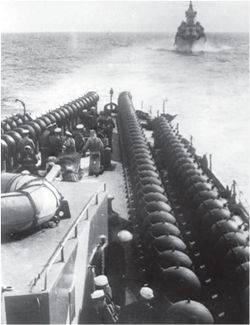
During the escort confrontation in the Mediterranean, Aosta took part in the first battle in Sirte Bay. With about the same success as Punta Steel.
In 1942, the cruiser was still involved in escort operations. The extreme point was the operation against the convoy "Vigores", marching from Alexandria to Malta.
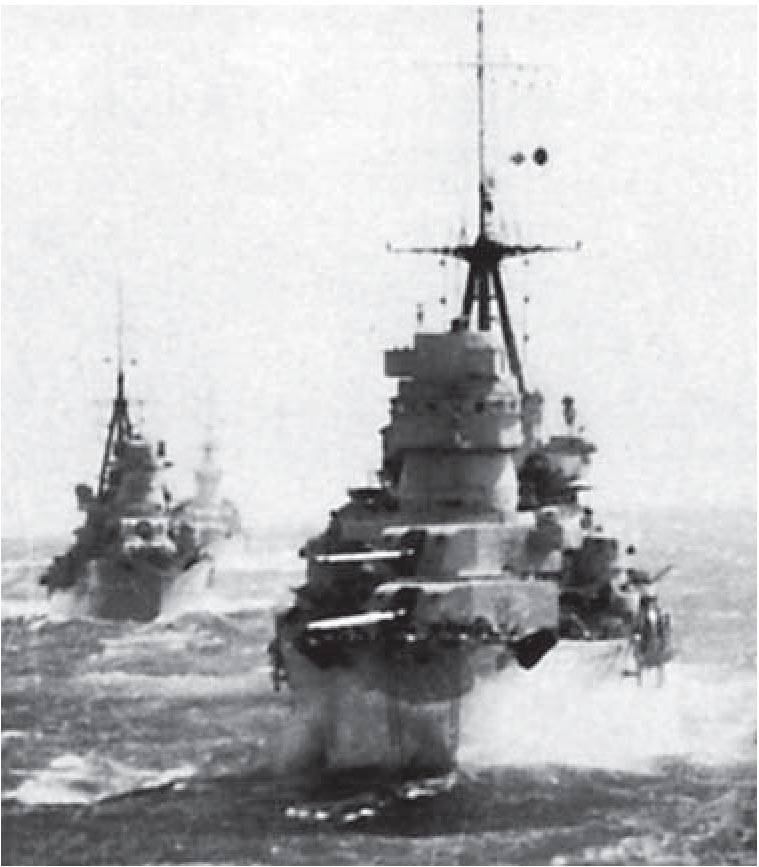
In principle, all the services to neutralize the convoy belonged to aviation and torpedo boats, the participation of cruisers was minimal. The British lost two sunken ships and the destroyer Heisty, and the cruiser Newcastle suffered very severe injuries. The Italians lost the heavy cruiser Trento, which was hit by torpedo bombers and finished off by a submarine.
We can say that the German-Italian forces coped with the task, since the Vigores convoy rejected the idea of a breakthrough to Malta and turned back on the course. Before returning to Alexandria, the British lost the Nestor and Airedale destroyers from air strikes, and the U-205 submarine sank the cruiser Hermionei.
After the armistice, Aosta went to Malta with the rest of the Italian fleet. The ship was lucky, and he was assigned to the resistance group to the German breakthrough forces in the Atlantic. A squad of Italian ships was composed of the cruisers Aosta and Abruzzi and the destroyers Legionnaire and Alfredo Oriani. The ships were based at Freetown and patrolled in these areas.
“Aosta” made seven patrols, after which he was returned to Italy.
Here you can tell that the Aosta team earned a reputation as a very riotous and unstable crew, and so much so that sailors were forbidden to go ashore in foreign ports. Fights of the Aosta crew with sailors of other nationalities became a kind of visiting card of the cruiser.
After patrolling, “Aosta” was used as a transport for the delivery of military personnel and civilians to Europe.
On February 10, 1947, a naval commission of the four powers began its work in Paris, which dealt with the division of the ships of the losing powers.
According to the draw, the Aosta went to the Soviet Union. February 12, 1949 the cruiser was expelled from the Italian fleet and received the number Z-15. In the documents of the Soviet side, the cruiser was initially listed under the name "Admiral Ushakov", later - "Odessa" and only on the eve of acceptance received the name "Kerch". But from the moment of signing the agreements and until the raising of the Soviet flag on the ship, a whole year and a half passed.
Not only were the Italians in no hurry, they had not yet fulfilled all the conditions for completing the ship. In addition, the cruiser demanded a major overhaul of the power plant and general repair of a medium order.
The command of the Black Sea Fleet for a very long time thought what to do with the cruiser. Investments of money and resources promised to be simply huge. The plans were very extensive, but they were adjusted several times. The result is the following:
- Italian air defense systems were replaced with 14 domestic 37 mm machine guns (4x2 V-11 and 6x1 70-K units);
- torpedo tubes installed domestic, 533 mm;
- almost completely replaced the auxiliary mechanisms with domestic ones;
- overhaul TZA.
Next, work was done to maximize the unification of the ship with the cruisers of Project 26 and 26 bis. They decided to keep the main caliber, and decided to replace the rest of the armament. However, the forced cost savings led to the fact that the "Kerch" was assigned to the category of ships that are to be maintained in service only by current repairs without modernization.
As a result, the ship completed repairs in May 1955 with the same armament, which significantly reduced its combat value. Suffice it to say that it remained the only American SG-1 radar, only later the Fakel-M recognition equipment and the Neptune navigation radar were installed.
After the repair, "Kerch" was part of the brigade, and then - the division of the cruisers of the Black Sea Fleet.
But the disaster of the battleship Novorossiysk put an end to the further use of the cruiser. There was no trust in the ship, and therefore in 1956 it was transferred to the training ship, and in 1958 to the OS-32 experimental ship.
It’s a pity, because the cruiser could really serve for quite some time and without any problems. But in 1959 he was finally disarmed and surrendered to metal.
What can be said about cruisers of the “D” type? They became veterans. The word "veteran" is of Latin origin and means "survivor". The ships really went through the whole war, took part in all the significant operations of the Supermarine, and, as they say, died their deaths.
This indicates that the project still brought to mind.
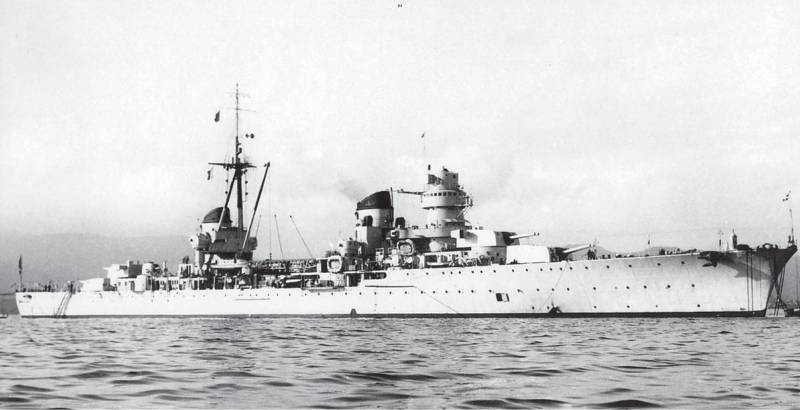
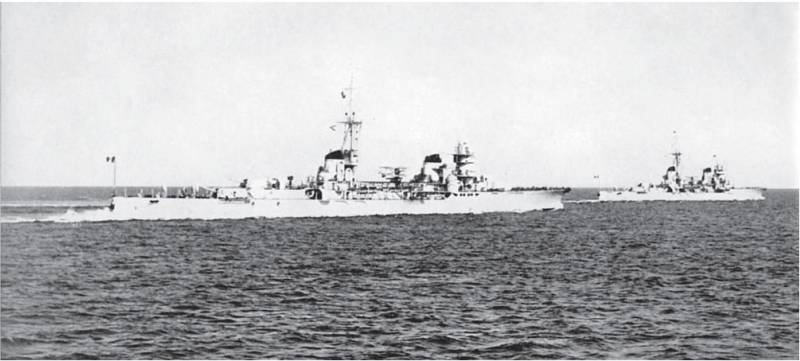
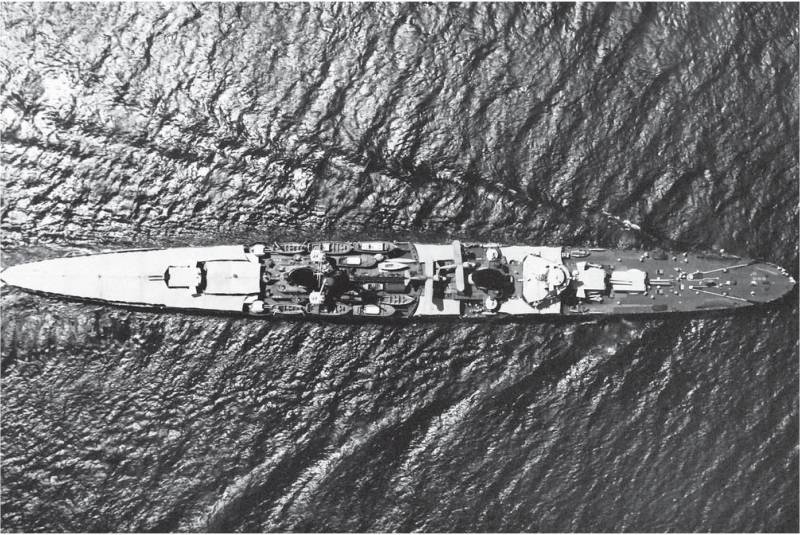
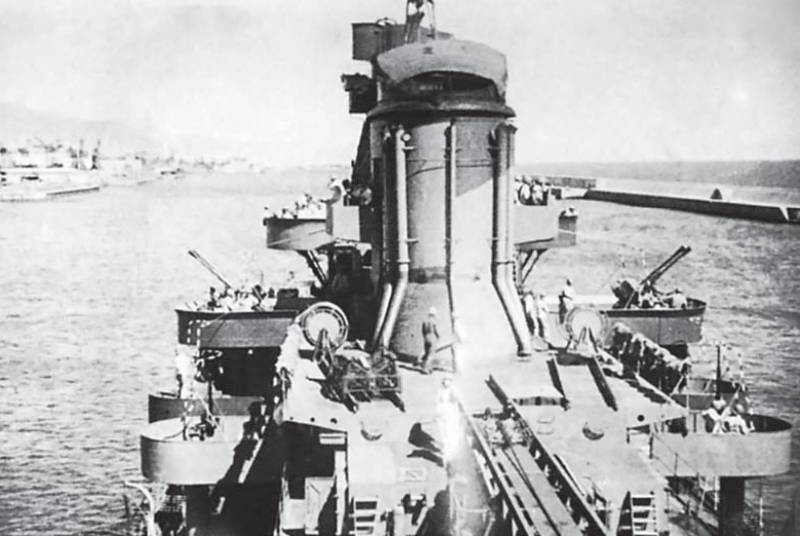
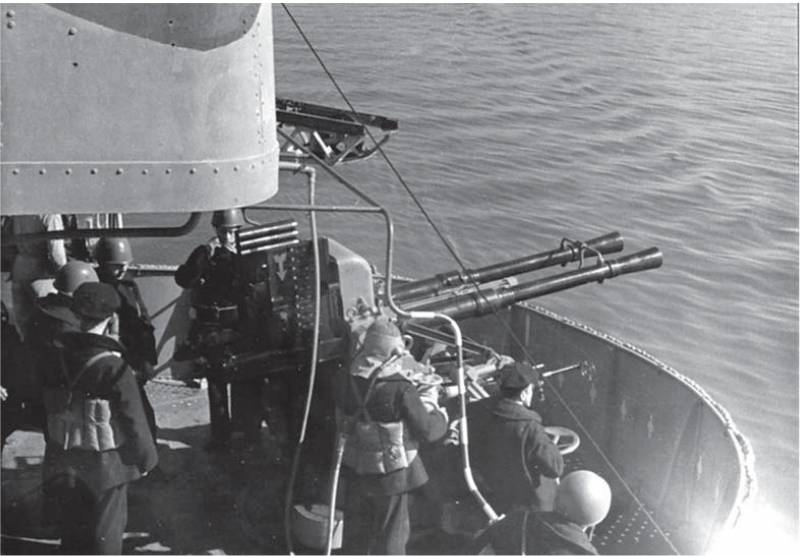
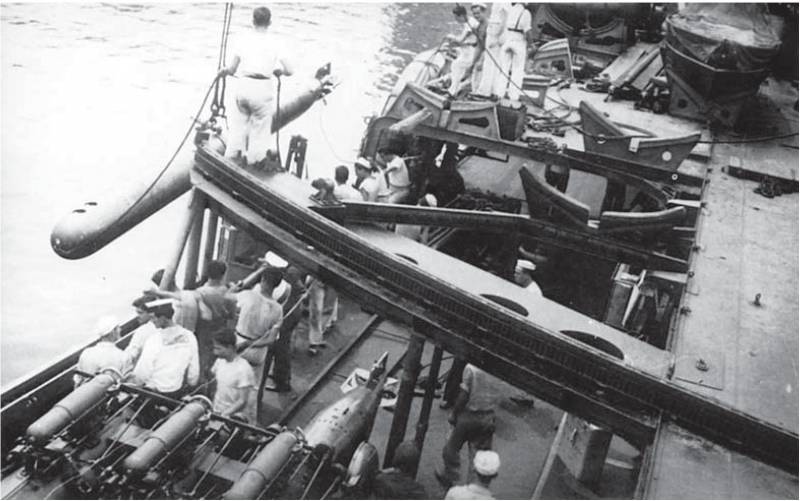
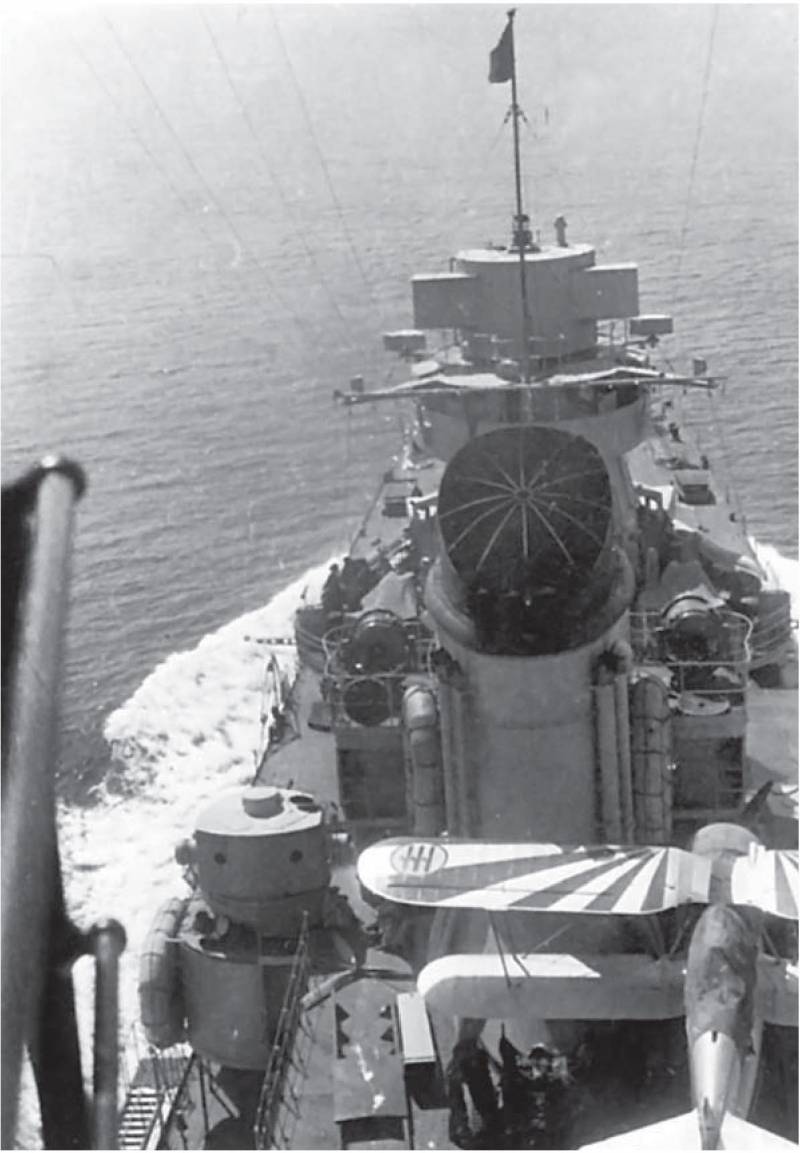
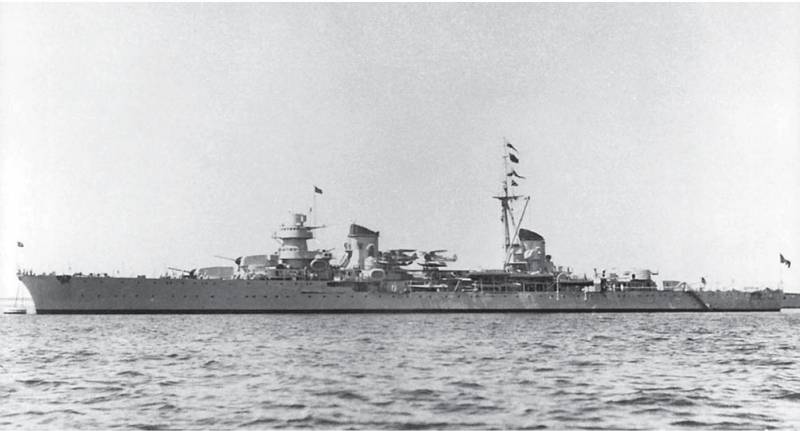
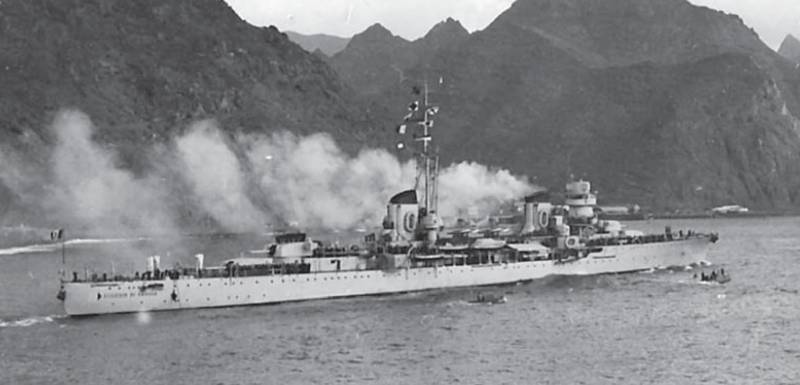
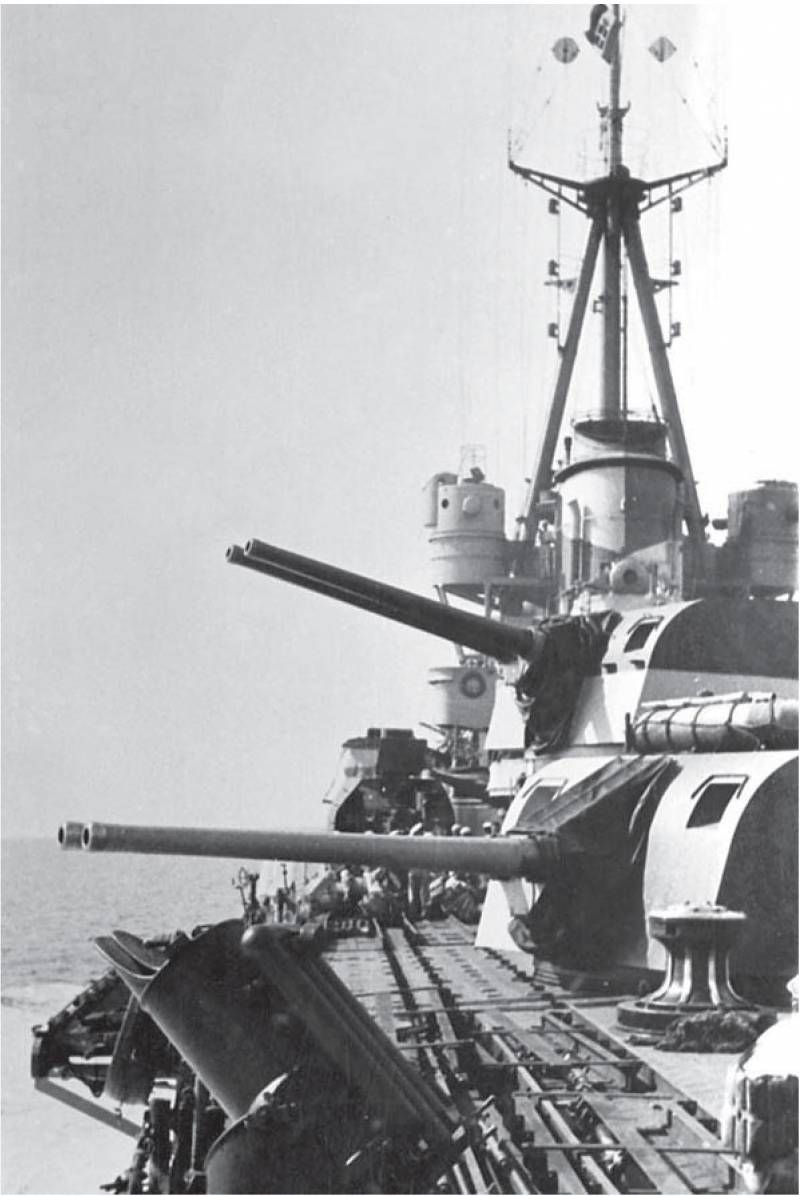
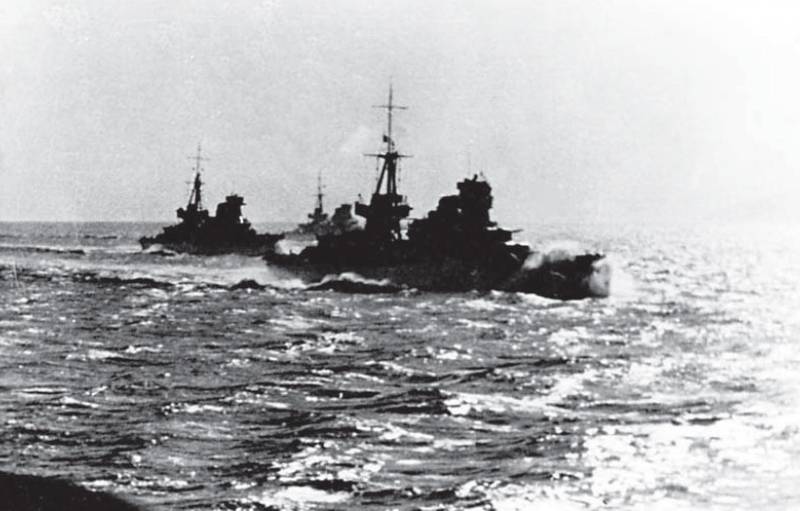
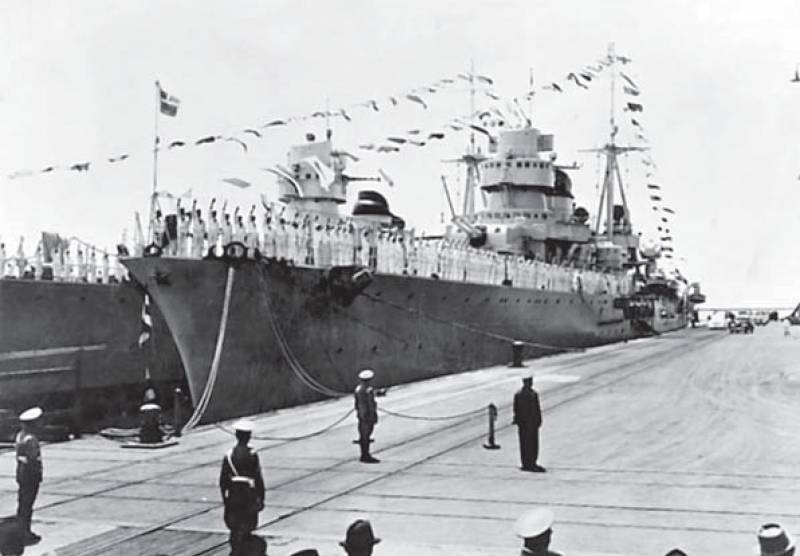
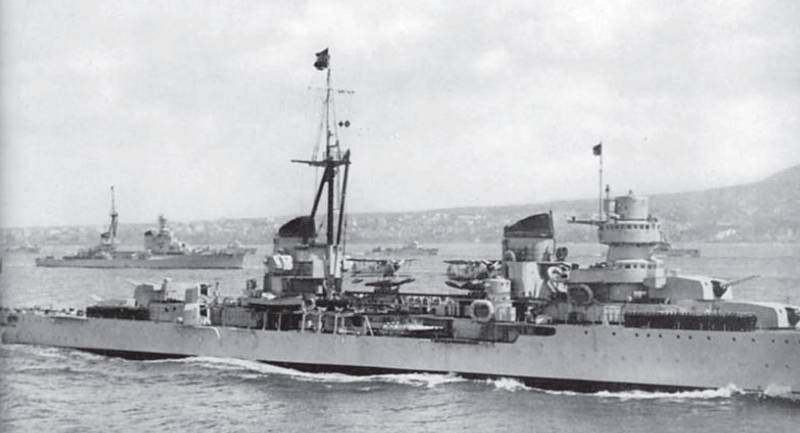
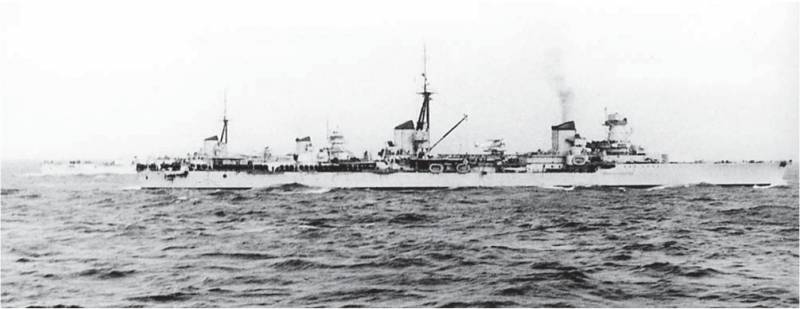
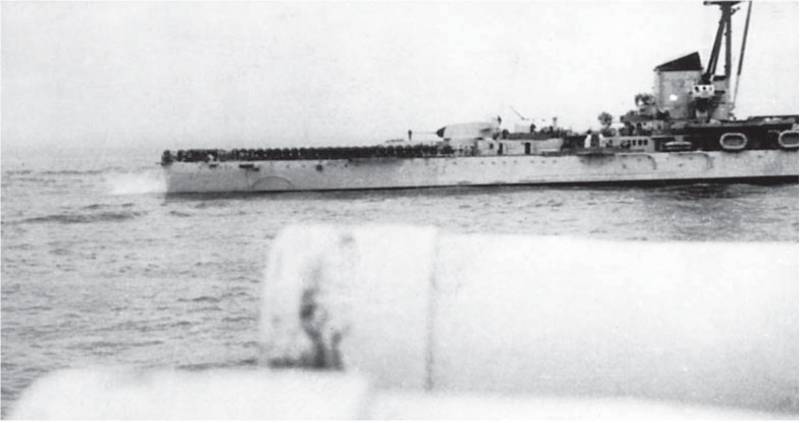
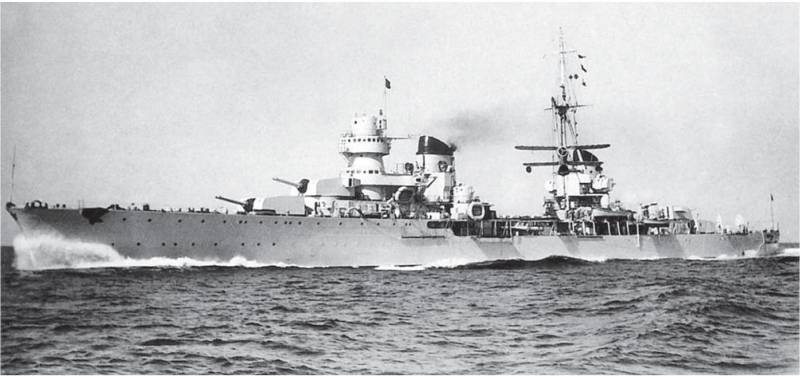
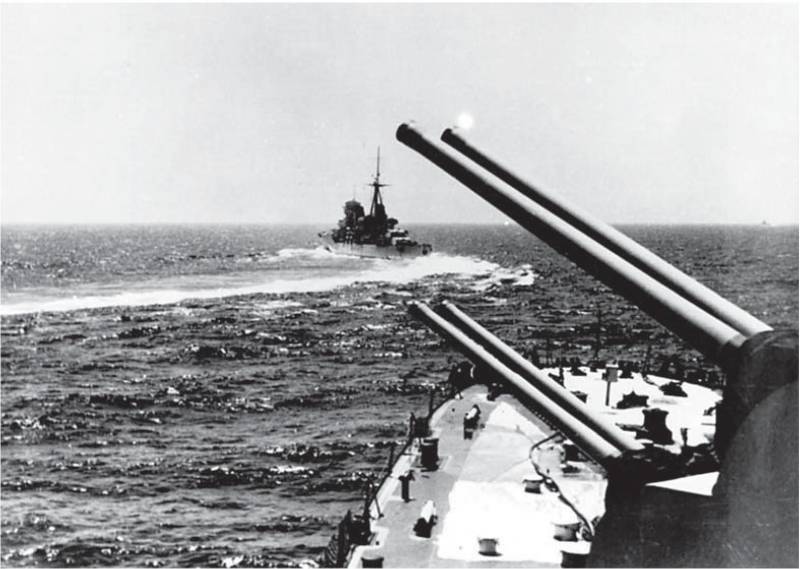
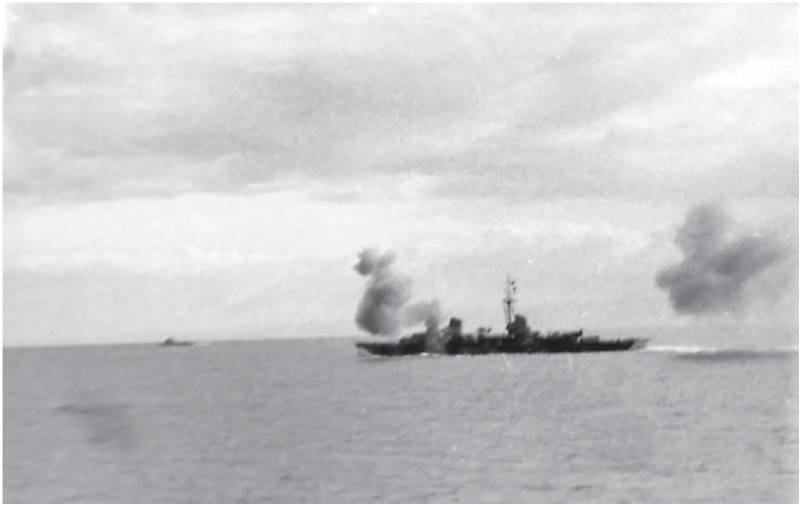
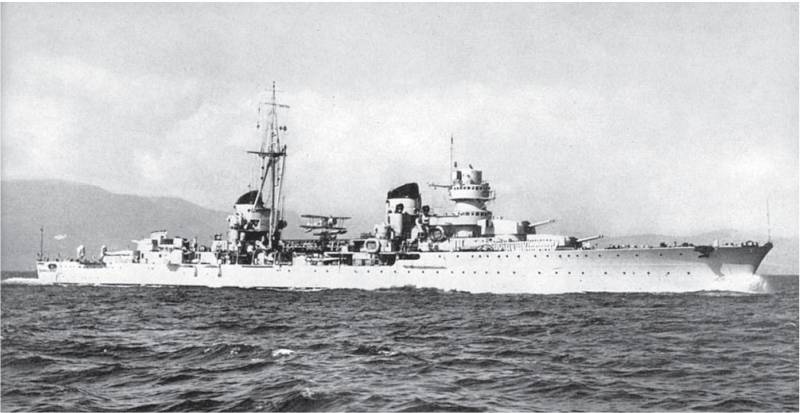
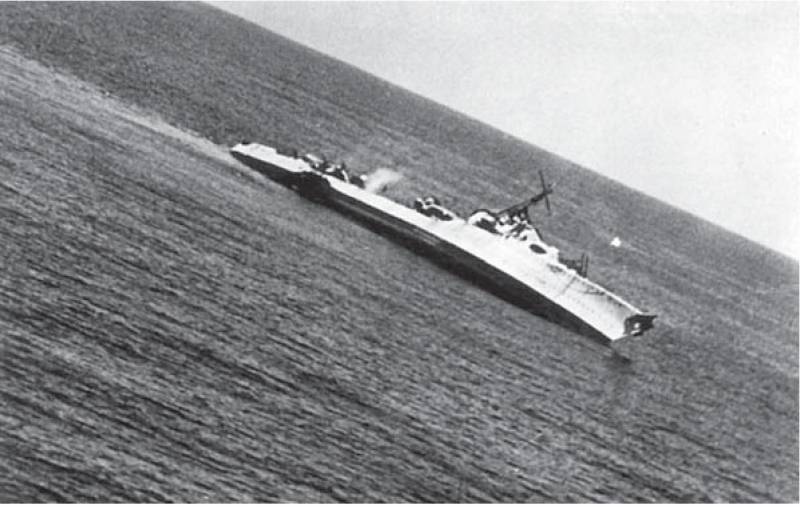
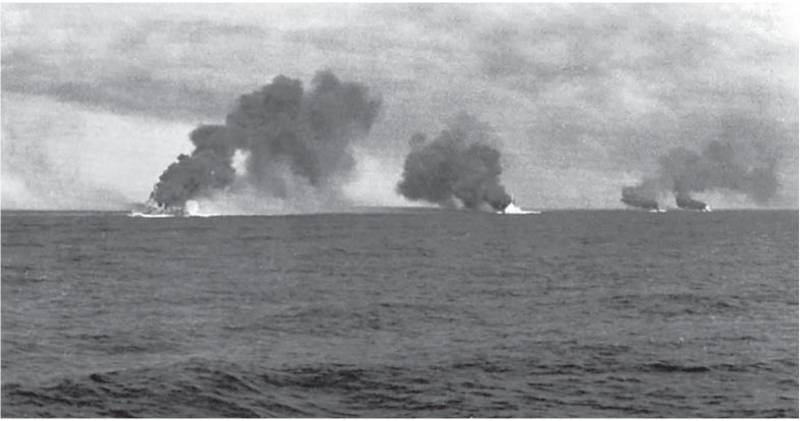
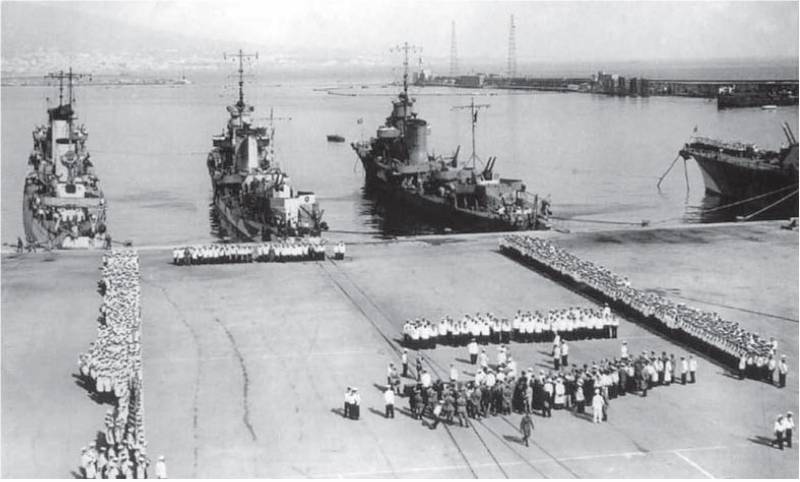
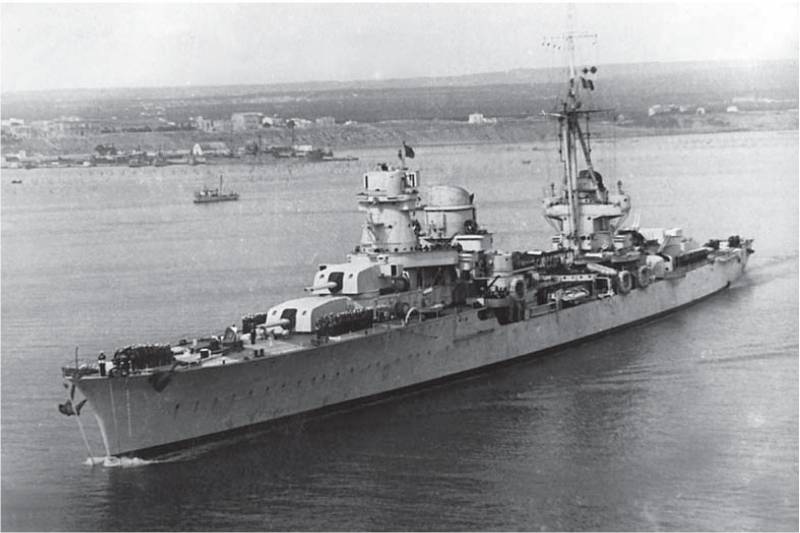
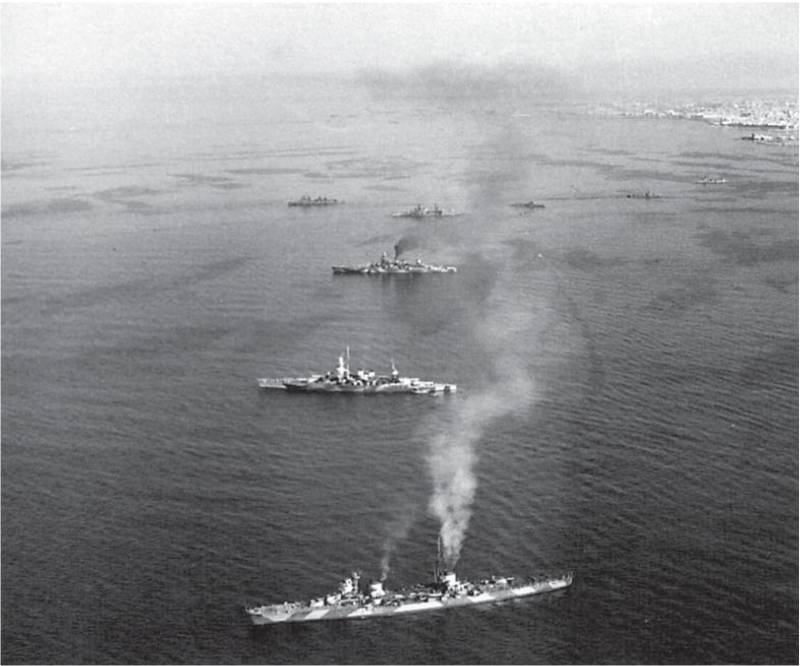
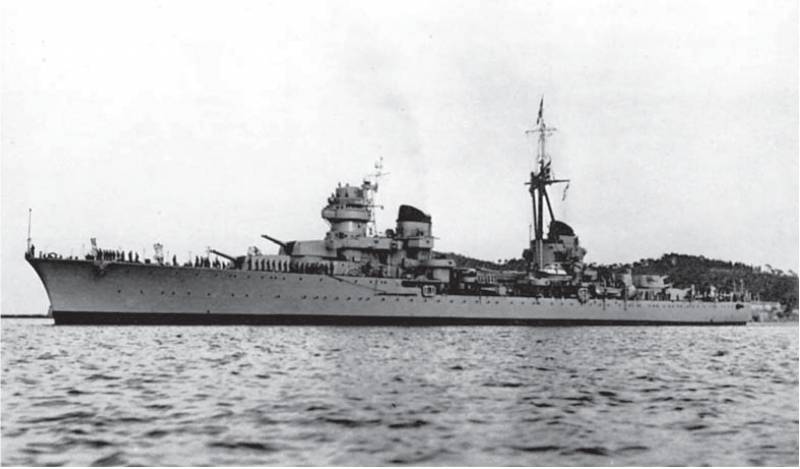
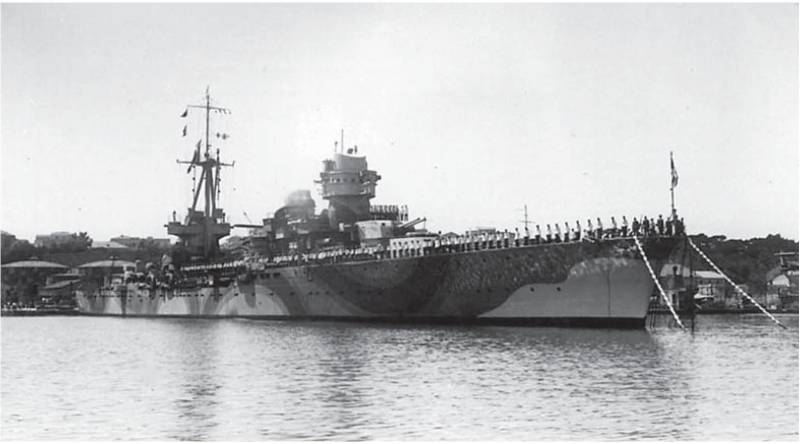
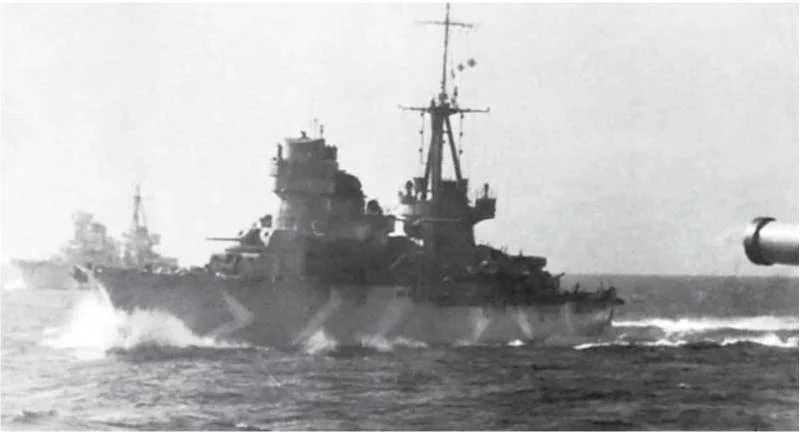
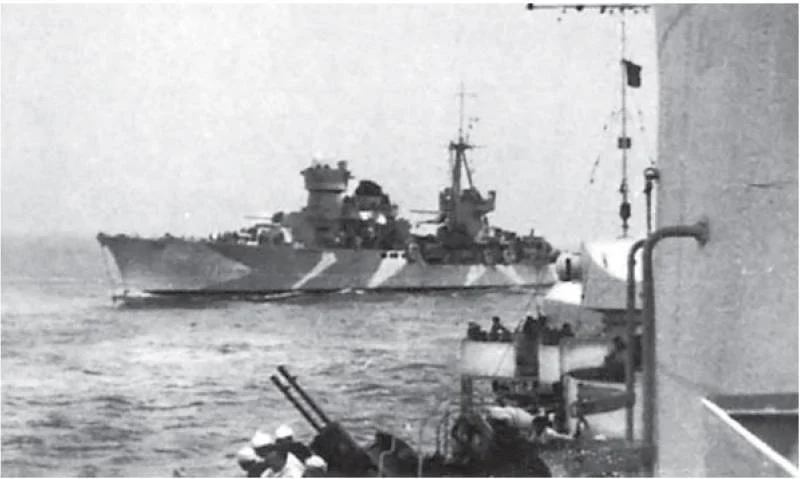
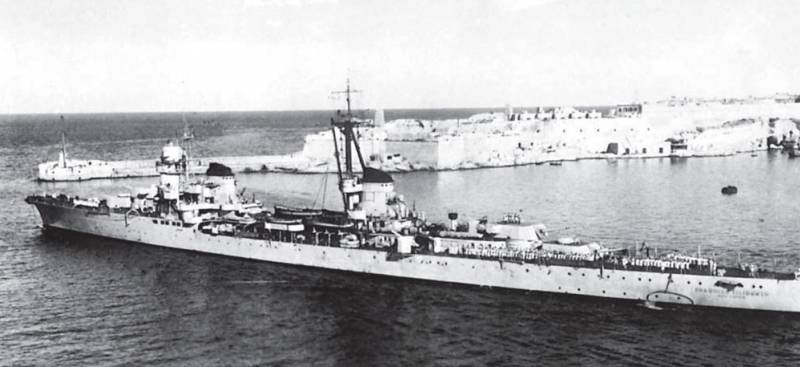
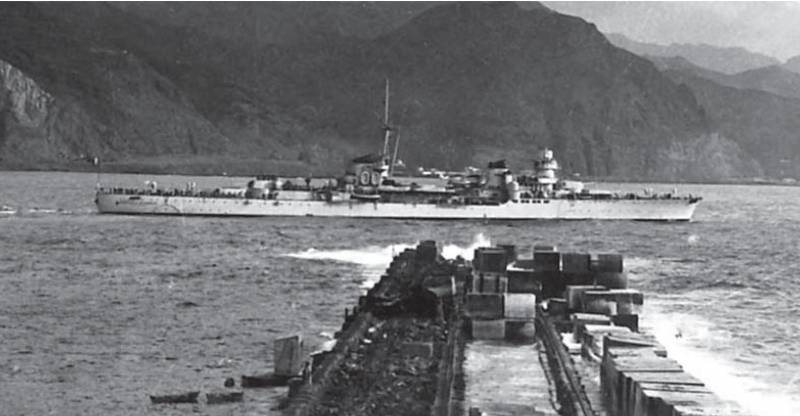
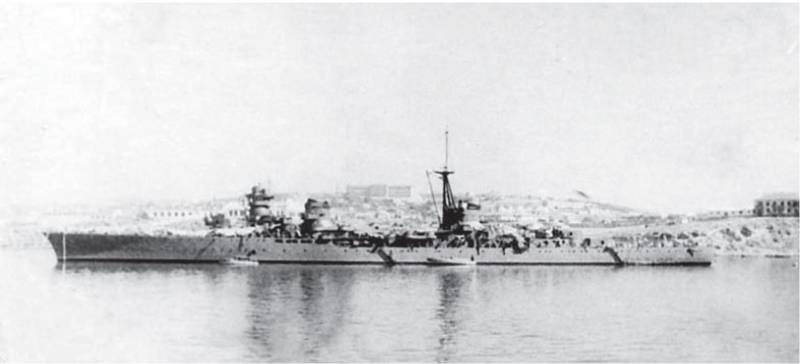
Information